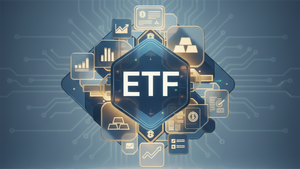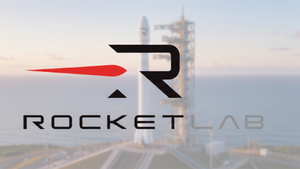
The global economic landscape is increasingly shaped by the imposing shadow of tariffs, a macroeconomic lever wielded by nations to reshape trade balances and bolster domestic industries. Recent widespread tariff implementations, particularly from the United States, have sent ripples through international commerce, stirring concerns over decelerating GDP growth, escalating consumer prices, and heightened geopolitical trade tensions. This aggressive stance marks a significant pivot in global trade policy, challenging established supply chains and forcing businesses worldwide to recalibrate their strategies in an environment of unprecedented uncertainty.
The immediate implications are already being felt across markets. Consumers are bracing for higher prices on a vast array of goods, from electronics and apparel to staple foods, as the added cost of imports is passed down the value chain. Industries reliant on globalized production are contending with disrupted supply networks and rising input costs, while the specter of retaliatory tariffs looms, threatening to constrict export markets for many nations. As the world economy navigates this protectionist turn, understanding the multifaceted impact on national economies and individual corporate entities becomes paramount.
The Escalation of Trade Barriers and Their Economic Fallout
The current wave of tariff-driven economic disruption is not an isolated phenomenon but rather an intensification of trends observed in recent years, most notably stemming from the US-China Trade War (2018-2020). This period saw the United States impose tariffs on hundreds of billions of dollars worth of Chinese imports, met with swift retaliation from Beijing targeting US exports. While initially aimed at addressing perceived unfair trade practices and intellectual property theft, the conflict resulted in significant reductions in aggregate real income for both nations, with US consumers largely bearing the burden of increased import costs. US manufacturing was also hit by elevated input costs, and Chinese exports to the US saw substantial declines. The overriding consequence was a pervasive policy uncertainty that dampened global economic growth, with some estimates suggesting a 1% reduction in global GDP growth.
Fast forward to 2025, and the landscape has become even more complex. The US expanded and increased tariffs on steel and aluminum imports. Initially set at 25% for steel and 10% for aluminum in 2018, these rates escalated to 50% for steel and 25-50% for aluminum in February 2025, with previous exemptions largely eliminated and the scope broadened to include household appliances. This move aimed to shield domestic producers but immediately raised costs for crucial sectors like automotive, mechanical machinery, and construction.
Beyond specific industries, April 2025 ushered in a series of steep and widespread US tariffs affecting nearly all goods imported into the country. The average applied US tariff rate soared from 2.5% to an estimated 27%, later settling around 17.4% by September 2025. This included a universal 10% tariff on most countries, with even higher rates for specific trading partners like Canada (up to 35%), Brazil (50%), and India (up to 50%). These comprehensive duties are projected to hike US consumer prices by 1.7% in the short term, equating to an average income loss of $2,300 per household, and are expected to suppress real GDP growth. The rationale behind these sweeping tariffs is often cited as a means to encourage domestic production, protect strategic industries, and exert leverage in international trade negotiations. However, they simultaneously fuel global trade tensions, prompting pushback from affected nations and fundamentally altering global supply chains.
Navigating the Tariff Maze: Winners and Losers Emerge
The current tariff regime creates a highly polarized environment, segmenting public companies into potential winners and clear losers based on their exposure to international trade, reliance on imported goods, and their capacity to adapt.
On the winning side, domestic industries that directly compete with previously cheaper imports stand to gain. Nucor (NYSE: NUE), a prominent US steel producer, is a prime example, expected to benefit significantly from the continued and increased tariffs on foreign steel. Similarly, energy companies with strong US production footprints, such as ExxonMobil (NYSE: XOM) and Chevron (NYSE: CVX), could see increased demand for domestically sourced energy if tariffs are imposed on imported fossil fuels. In the agricultural sector, US-based food producers like Archer Daniels Midland (NYSE: ADM) and Tyson Foods (NYSE: TSN) might find their products more competitive as imported alternatives become costlier. Even some technology firms with significant domestic manufacturing capabilities, like Intel Corp. (NASDAQ: INTC), could see an advantage as national governments prioritize technological self-sufficiency. The defense and aerospace industry, including giants like Lockheed Martin (NYSE: LMT) and Northrop Grumman (NYSE: NOC), might also see increased domestic contract opportunities due to a renewed focus on national sourcing.
Conversely, the losers largely consist of companies with complex global supply chains, heavy reliance on imports from tariff-hit nations, or significant export markets in countries that implement retaliatory duties. Apple Inc. (NASDAQ: AAPL), despite seeking exemptions, has faced challenges due to its substantial manufacturing presence in China, impacting earnings as the trade war affected the Chinese economy and threatened its supply chain. Semiconductor firms like NVIDIA Corp. (NASDAQ: NVDA) and Micron Technology (NASDAQ: MU) are vulnerable due to their reliance on components from China and Taiwan. The apparel and footwear industry, represented by companies like Gap (NYSE: GPS), Nike Inc. (NYSE: NKE), and Levi Strauss & Co. (NYSE: LEVI), has seen stock prices fall following tariff announcements, grappling with increased costs on Chinese-made goods.
The automotive sector is another major casualty, as demonstrated by Tesla Inc. (NASDAQ: TSLA), which had to adjust prices on its Model S and Model X in China due to increased tariffs, sometimes absorbing costs to remain competitive. Manufacturers in other sectors, such as MAHLE (a piston manufacturer) and Martin's Steel, have reported millions in increased costs from steel and aluminum tariffs, forcing them to raise prices for customers or compress margins. Retailers and transporters, like shipping and trucking companies, are also categorized as potential losers due to supply chain disruptions and higher operational costs, often passing these on to consumers. Many companies have responded by diversifying supply chains, relocating production to other countries ("China +1" strategies), absorbing costs, or passing them on to consumers, but these adaptations come with their own set of challenges and expenditures.
Industry Shifts and Broader Global Implications
The current tariff storm is more than just a temporary disruption; it's a catalyst accelerating several broader industry trends and reshaping global economic interactions. One significant trend is the push towards supply chain reshoring and diversification. Companies are actively seeking to reduce their dependence on single-country manufacturing hubs, particularly China, by exploring production in Southeast Asia, India, Mexico, or even bringing manufacturing back to their home countries. This strategic pivot aims to enhance resilience against geopolitical risks and future trade disputes, but it also entails substantial investment, retooling, and potential efficiency losses in the short term.
The ripple effects extend far beyond directly tariffed goods. Competitors in unaffected regions might see temporary advantages, while partners in existing trade agreements could face pressure to renegotiate terms or re-evaluate their alliances. For instance, the expanded US tariffs in 2025 on countries like Canada, Brazil, and India intensify trade tensions and provoke discussions of retaliatory measures, threatening to unravel existing trade relationships. This environment also spurs a renewed focus on technological self-sufficiency, particularly in critical sectors like semiconductors, as nations seek to reduce vulnerability to foreign export controls and ensure strategic autonomy.
Regulatory and policy implications are profound. Governments are under pressure to support domestic industries through subsidies or other protective measures, potentially leading to further market distortions. Internationally, the World Trade Organization (WTO) faces increasing challenges to its multilateral trading system, as countries resort to unilateral tariff actions. Historically, periods of widespread protectionism, such as the Smoot-Hawley Tariff Act of 1930, have been associated with exacerbated economic downturns and reduced global trade, serving as a cautionary tale for the potential long-term consequences of escalating trade barriers. The current scenario echoes these historical parallels, raising concerns about a prolonged period of slower global growth and increased economic nationalism.
The Road Ahead: Navigating Uncertainty and Adapting Strategies
Looking ahead, the short-term outlook suggests continued volatility and adjustments for businesses and consumers alike. Inflation, driven by higher import costs, is likely to persist as companies pass on tariff burdens. Supply chains will remain a key focus, with ongoing efforts to de-risk and diversify. Companies that have successfully implemented agile supply chain strategies and possess strong balance sheets will be better positioned to weather the immediate storm.
In the long term, the ramifications could be more structural. We may witness a sustained trend of reshoring and nearshoring of manufacturing, particularly for strategic goods, leading to shifts in global production hubs. This could foster the growth of certain domestic industries, albeit potentially at a higher cost. Technological innovation aimed at self-sufficiency will likely accelerate, especially in sectors deemed critical for national security and economic competitiveness. New trade agreements and alliances, designed to circumvent existing tariff barriers, could emerge, reshaping the geopolitical map of commerce. Market opportunities may arise for logistics companies specializing in supply chain redesign, as well as for domestic producers who can scale up to meet increased demand for locally sourced goods. Challenges include the risk of prolonged economic stagnation if trade wars escalate, hindering investment and innovation.
Potential scenarios range from a gradual de-escalation of tariff tensions through negotiated settlements to a further deepening of protectionist policies, potentially fragmenting the global economy into regional blocs. Businesses will need to demonstrate significant strategic pivots and adaptability, focusing on localized production, robust inventory management, and a deep understanding of evolving trade regulations. Investors should consider the sector-specific impacts, favoring companies with strong domestic markets, diversified supply chains, or those that stand to benefit from reduced foreign competition.
Conclusion: A New Era of Trade Dynamics and Market Vigilance
The pervasive influence of macroeconomic factors, particularly the widespread implementation of tariffs, has undeniably ushered in a new and challenging era for the global economy. The summary of key takeaways points to a persistent inflationary environment, disrupted international trade flows, suppressed GDP growth projections, and a dramatic restructuring of global supply chains. While some domestic industries may experience a protective shield and short-term advantages, the broader economic impact suggests a net negative, characterized by reduced consumer purchasing power and heightened business uncertainty.
Moving forward, the market will remain sensitive to any shifts in trade policy, geopolitical developments, and the ongoing responses of central banks to inflation. Investors must exercise extreme vigilance, carefully assessing the exposure of their portfolios to tariff-affected sectors and companies. Companies that demonstrate resilience through innovation, strategic supply chain management, and the ability to adapt to a fragmented global marketplace will be better positioned for sustained success. The lasting impact of these trade policies is likely to be a more regionalized and less interconnected global economy, necessitating a fundamental reassessment of investment strategies and corporate operating models in the months and years to come. The era of seamless global trade, for now, appears to be yielding to a more guarded and complex international commercial landscape.




